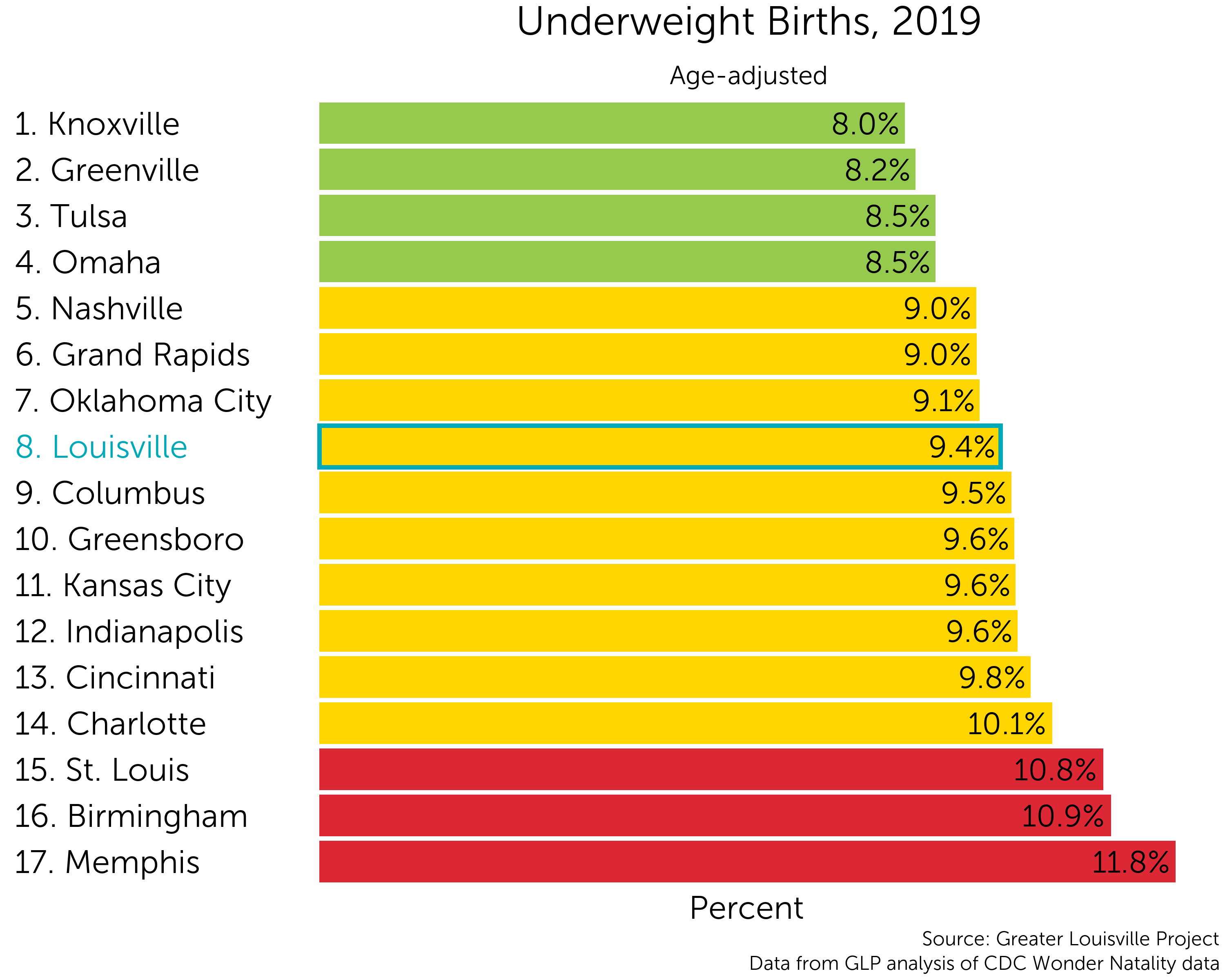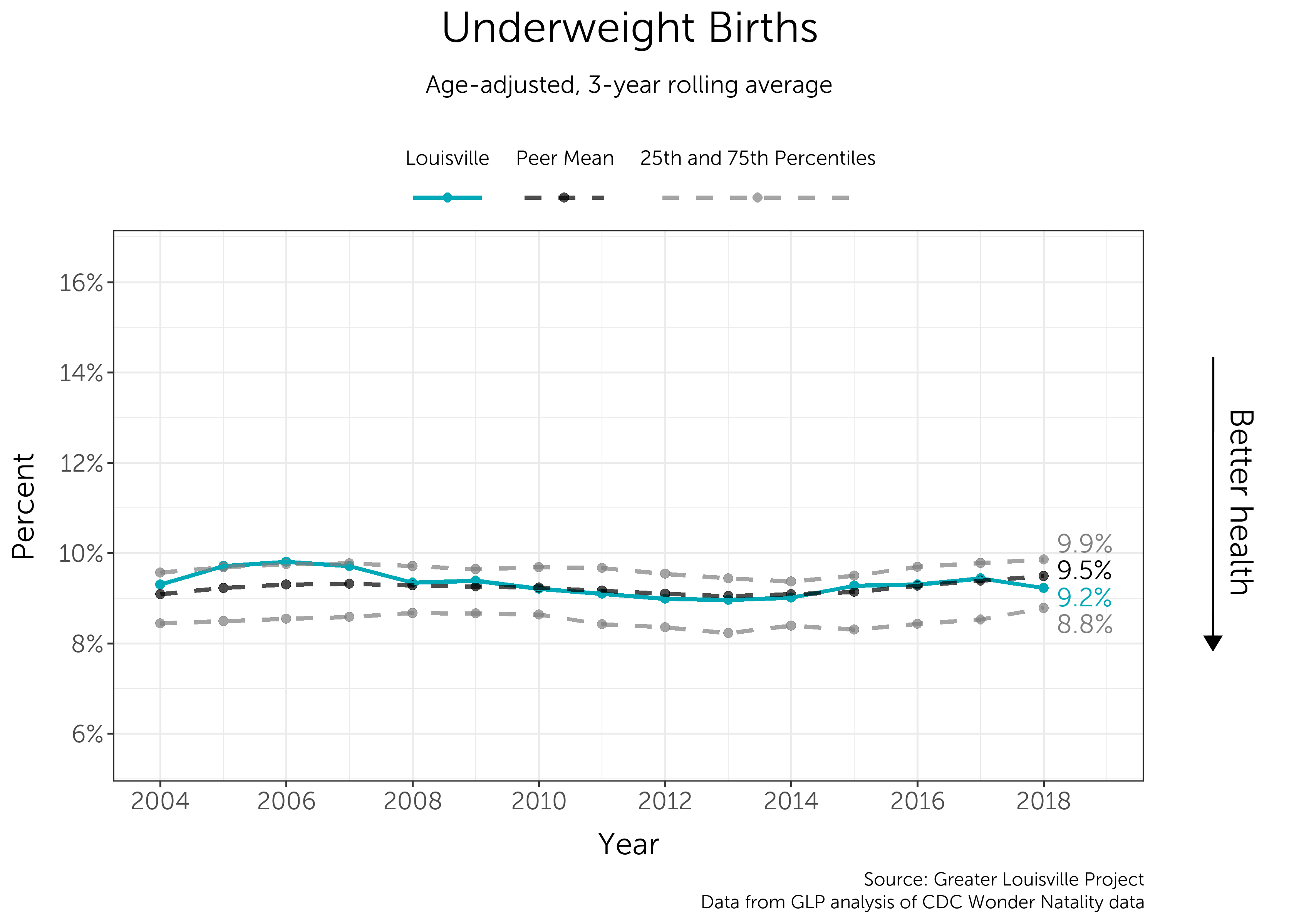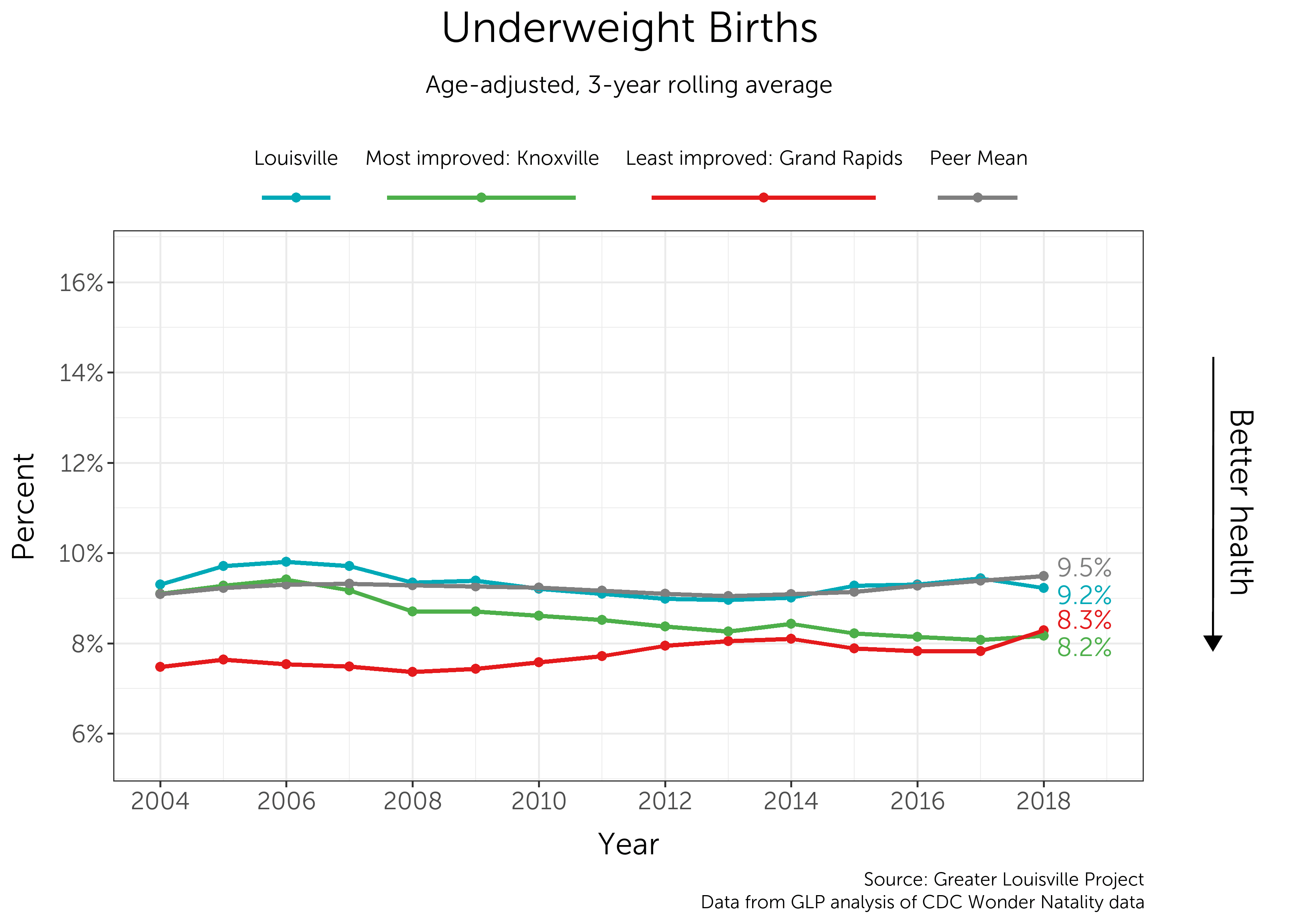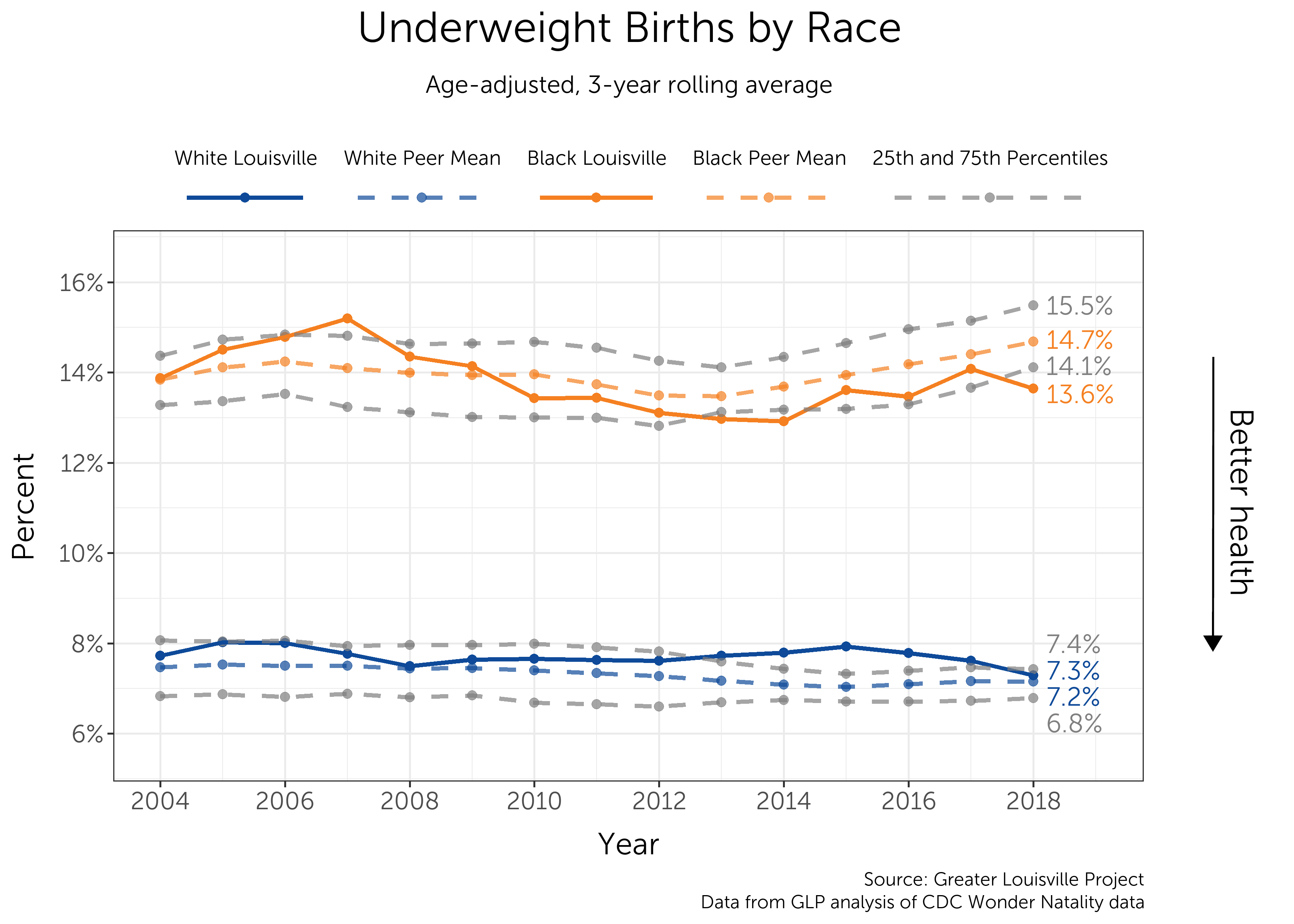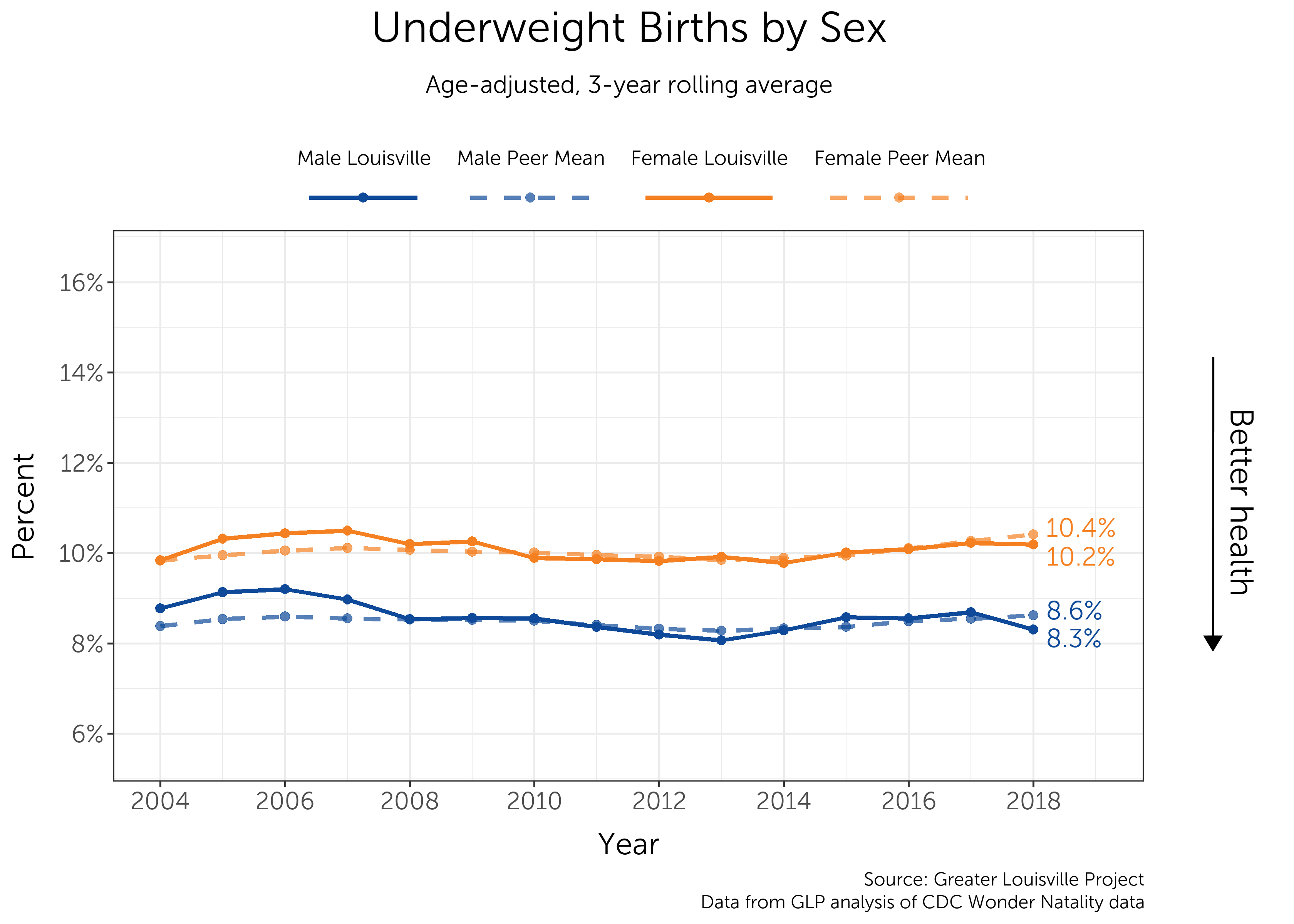Low Birthweight
Low birthweight causes many health challenges for newborns in the days and months after their birth and serves as a strong predictor for future health issues such as developmental problems, cardiovascular disease, and respiratory conditions. Low birth weight is also an indicator of the health of the mother during pregnancy and of the accessibility of maternal health resources. A child is categorized as having a low birth weight if the weight at birth is less than 2,500 grams.

